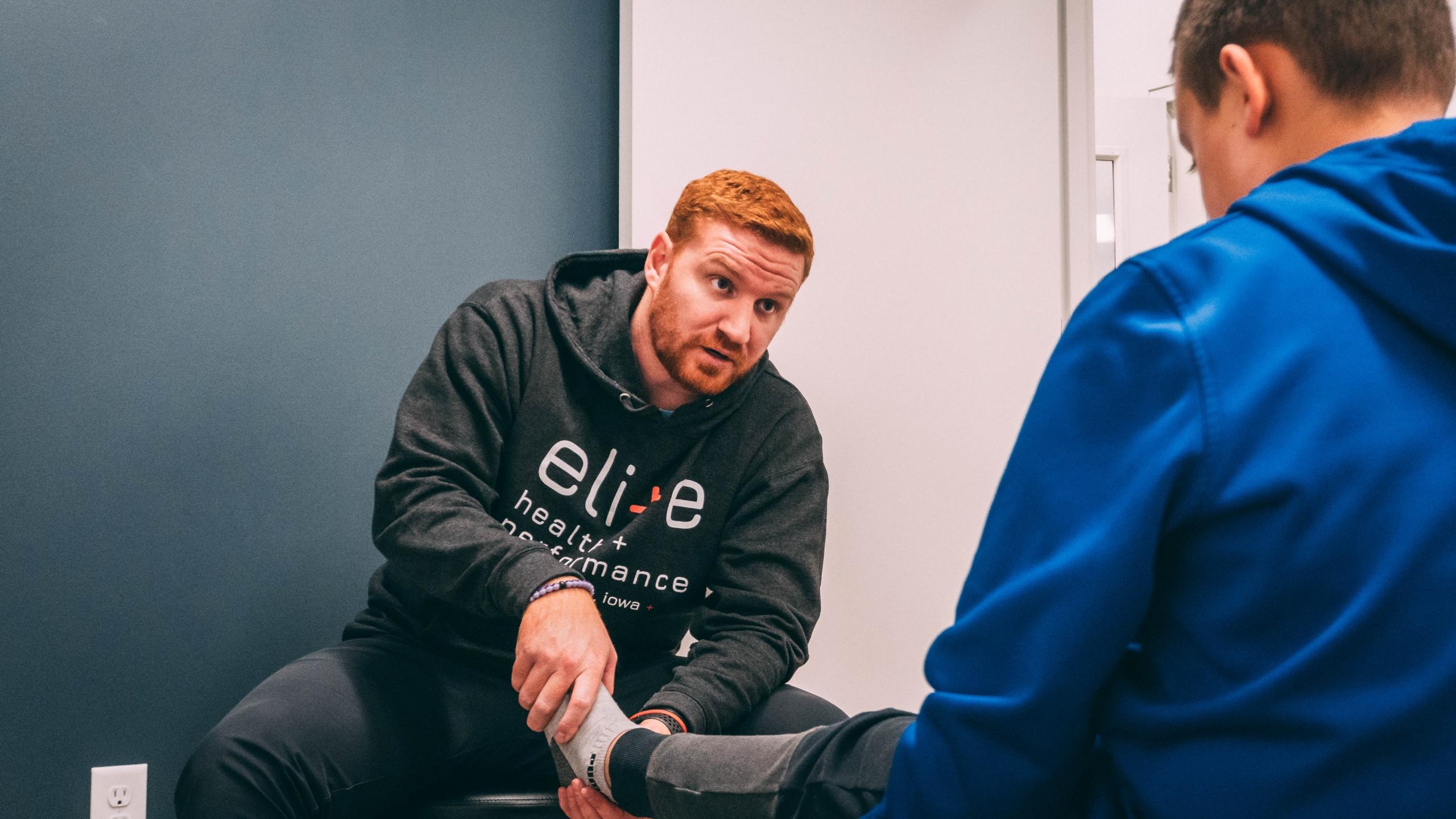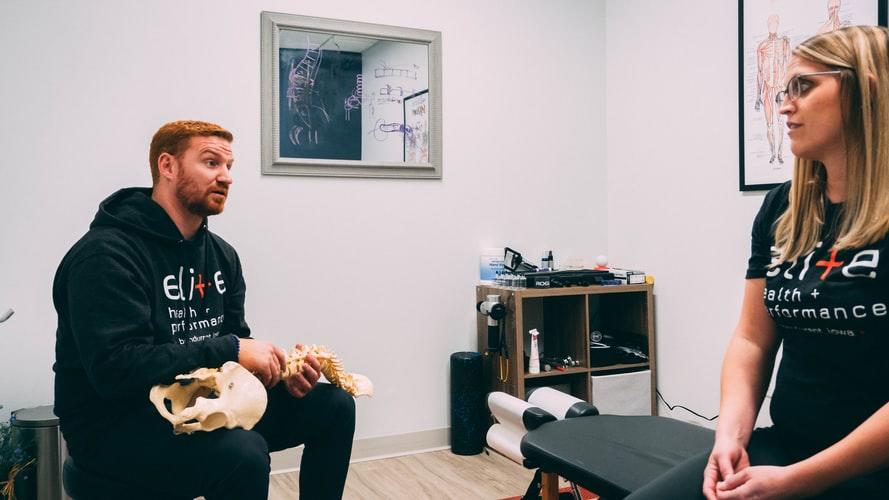The word personal trainer is often thrown around rather casually. Immediately, what comes to mind is a trained professional helping out an amateur in the gym.
While this might be the case sometimes, personal training has a lot more to offer than this. There are years of hard work and effort that go into it.
Interested in a career in personal training? Read ahead:


Define the Role of a Personal Trainer?
Simply put, a personal trainer is a certified professional who helps their clients achieve fitness and health-based targets.
They do so with the knowledge of how the human body works and provide health, nutrition, and exercise instructions to their clients.
Furthermore, they will also motivate their clients to live healthier. Therefore, a certified professional trainer is well-versed in:
- Human anatomy
- Kinesiology
- Nutrition
- Exercise science
Personal trainers will either have a one-on-one session with clients or host small gatherings where people follow one routine. This could be weight training, cardio exercises, or any physical activity that you might want or need.
Due to COVID-19 and other reasons, there has been a rise in people opting to choose a career as a personal trainer.
Demand for these services has always been high, but with more people staying at home, there has been a need for some physical exercise.
Besides this, organizations are now pushing for more and more of their workforce to be physically active.
Countless studies have also supported the notion that alongside fulfilling their contractual responsibilities, employees must be fit and in peak physical condition.
This has pushed more and more people to venture down the road towards better health. In addition, governments and organizations have seen how much good it does, prompting more people to go.
Hence, with more people taking an interest in their health, the need for personal trainers has risen.
How To Start?
Before you become a personal trainer, there is a path that needs following.
To become a personal trainer, there are specific certifications and training that you must first go through. First, however, some basic steps need to be followed:
High School Diploma
If you're wondering what education is needed to become a personal trainer, a high school diploma or GED is the most basic requirement.
But you can also build your personal training portfolio with additional educational degrees.
Life-Saving Skills
You must complete an AED and CPR course. For your client's wellbeing, you need first to get an automated external defibrillator (AED) and then a cardiopulmonary resuscitation (CPR) certification.
These certifications prove that you can save your client's life in case of an emergency or at least neutralize the problem until help arrives.
Choose Your Specialization
Pick a niche. To get certified as a personal trainer, you choose what sort of personal training you want to offer.
Depending on this decision, you will apply for and then get a certification. Your choice will determine the training and planning required to start offering your services.
Get Certified
Pick a certification and go for it. In the US, six different organizations offer personal training certifications. They are:
- The American College of Sports Medicine (ACSM)
- The American Council on Exercise (ACE)
- The International Sports Sciences Association (ISSA)
- National Strength and Conditioning Association (NSCA)
- National Federation of Personal Trainers (NFPT)
- The National Academy of Sports Medicine (NASM)
Look For Clients/Job
Once certified, tune your skills, and find a job. Like any job in the world, you need first to train before putting yourself out there.
Build your niche, perfect your methods, see what works for you, and construct your resume accordingly.


What Does A Personal Trainer Do?
As a personal trainer, your job is a lot more than telling people how to exercise and what to eat. As uncle Ben from Spiderman said, "With great power comes great responsibility," which is exactly what a personal trainer has.
To start with your job, you must first question the client regarding their health and history. Once done, you then need to know what they want to achieve.
As their trainer, the second step is to set both long-term and short-term goals for your client. These goals will be stepping stones that lead to the final destination.
Next, you will educate them regarding this plan of action, its safety, and effectiveness. If a client has a string of nasty habits slowing them down, you need to help overcome them.
As their trainer, it is your job to give them advice regarding their health, nutrition, and any lifestyle changes that they need to.
Finally, you need to monitor your client's progress. By regularly keeping track of their progress, you will know how well or poorly they are performing.

Different Career Options As A Personal Trainer
The term personal trainer is as vague as the term doctor. However, there are several sub-occupations under the banner of a personal trainer that you can assume.
With the countless advantages of being a personal trainer, you need to see which one suits you the best.
High-End Coaching
As the name suggests, this is a premium wellness service that you can offer. For a personal trainer offering high-end coaching, you are your own boss.
Therefore, you decide the schedule, duration, and routine for each client. However, your clients come to you expecting the best results, and it is your job to deliver those results.
As a result, you must go out of your way to ensure that they meet their goals; this includes helping them build mental and physical fortitude.
Physical and mental health is both equally important for a person. As a high-end coach, you should give your clients the best possible options to work on both.
And even if you don't entirely solve their body issues, you must at least set them in the right direction and empower them to do it independently.
To become a high-end coach, you must have:
- A certain level of nutritional and psychological training
- Dynamic workouts
- Impeccable service
- Strong networking skills
This last skill is essential because satisfied clients result in more business through recommendations.
Gym Manager
If you work in a gym or club, chances are you can try for a managerial position. As a gym manager:
- You get a steady income with benefits
- Learn how to deal with different types of customers
- Learn how to run administrations
Since most gyms tend to hire managers internally, chances are you would have to work your way up to the job.
Once up there, not only do you have a new set of opportunities, you are also in a position to teach your juniors the tools of the trade.
It takes some time and effort to get here – just like any other job you do.
Clinical Work
If you have an affinity for doing a lot more for people, particularly regarding the science and anatomy of the human body, this is the route you need to take.
While clients are trying to improve themselves, some clients need saving. These can be athletes with injuries, people recovering from accidents, or a senior citizen recovering from surgery.
To help these people, different areas of personal training can be pursued. These include but are not limited to:
- Physical therapist
- Injury rehabilitation
- Occupational therapist
- Sports medicine
- Clinical trainer
- Fitness specialist
- Athletic trainer
All of these jobs will require you to obtain additional training and certifications. Most of these even need you to have a proper degree in sports or nutrition.
However, once you have them, finding employment is easy. It could be in a hospital, on school or college campuses, or even on professional sports teams.
On the flip side, these jobs are the hardest to work towards; they are also the best paying. Top earners in sports science, for example, earn around $135,000 annually.
Consulting
For the more seasoned professional, consulting is the next step. It allows you to take your great experience and spread it to people entering this space in different ways.
There are several ways to start consulting:
- Mentoring amateur personal trainers
- Creating customized training programs for your clients
- Instructing at a gym or fitness club
- Join other professionals and teaching other people
- One-on-one coaching for clients willing to pay for it
Career As A Personal Trainer – Is it worth it?
You ask any personal trainer out there, and they will tell you that the options in this field are endless.
However, if you have the right drive and hunger to put in the time, effort, blood, sweat, and tears, you can find an opportunity that is perfect for you.
And if you're wondering about personal trainer salaries, these can hover between $45,000 - $90,000 depending on specialization and experience.
Is personal training a good career? Yes, it is. There are health benefits for you and your clients; you are in a position to impact people's wellbeing directly, and finally, you can teach other people these things so that they too may do the same.
If you want to get started on your personal training journey, sign up with Superprof. Superprof is a platform that connects tutors and students.
Therefore, you can first use it to learn how to be a personal trainer. And then, you can even offer your services from the platform.
Sign up to Superprof today and change your life!
























